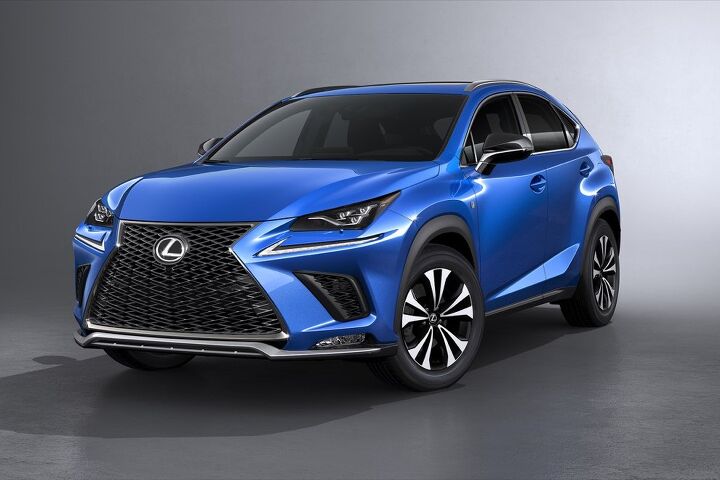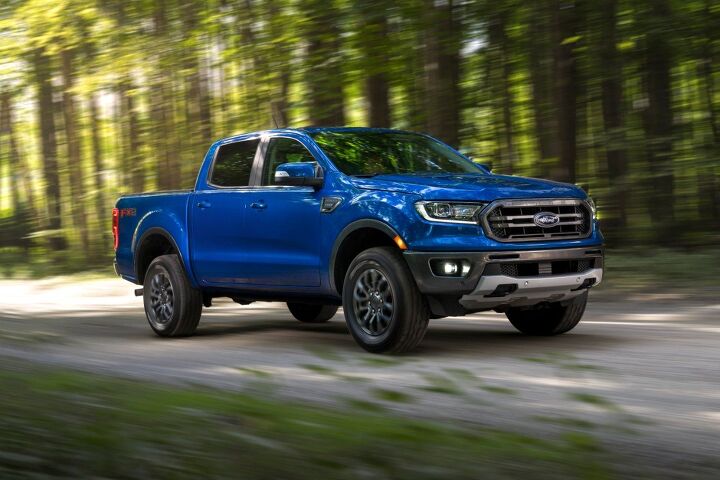#U.S.AutoSales
Tight Inventory Stands to Hamper July Sales, At Least for Some
Fall holiday discounts aside, the height of summer is typically a good time to head out and buy a car. The weather’s good, new models are rolling into dealers, and markdowns are appearing on older stock taking up precious space. Yet 2020 is anything but a normal year.
As the industry struggles to regain the volume it once enjoyed, threadbare inventories continue to plague automakers, though not everyone’s equal in this exercise.
Seeing Red: U.S. Auto Sales, Q2 2020
In what might be the most blindingly obvious statement ever to be made in this august publication, the second quarter of 2020 was an absolute disaster for vehicle sales. Under the withering gaze of a global pandemic, the nation’s car dealers were awash in red ink — and the bitter tears of various dealer principals.
Demand and supply have cratered, producing a bewildering simultaneous mix of good deals in some segments as stores try to keep the lights on while shortages of a few key models hold the pricing line on others. Pile on the vanishing rental market you have an automotive industry the likes of which few have ever seen.
Industry In Line for Milder Sales Uptick in June
Your mileage will vary, automakers. As consumer confidence increases to some degree — a phenomenon partially dependent on what the novel coronavirus is doing in various regions — auto sales are expected to follow.
Forecasters now claim U.S. auto sales will see a marked uptick in June that pales next to the jump seen in May.
Subaru USA CEO Tom Doll Gets Specific About COVID and Post-COVID U.S. Sales Goals
After a streak of 11 consecutive years of U.S. sales growth for Subaru, a period in which the brand doubled its market share to 4.1 percent, “We’ll start a new streak next year,” the brand’s U.S. CEO Tom Doll says of 2020.
At any other point in history, the declines reported by Subaru over the last few months would be calamitous. Yet Subaru’s year-over-year losses in 2020, a year torn to shreds by COVID-19, have not been as severe as anticipated. Moreover, bright spots have been more numerous than expected.
The company, as a result, is now planning for 2020 to end as the brand’s sixth-best on record.
Foursome: America Shuns Non-Crew Cabs Like Never Before
Once upon a time, crew cab pickups were for logging crews in the Pacific Northwest, not families. That’s obviously changed. Whereas the typical pickup configuration was a regular cab, long-bed setup (efficient!), times change, and with it the take rates of various truck configurations.
In the eventful 2020 model year, it seems the buying public has never had less use for once-common body styles. It’s four doors, or get lost.
Rebounding Premium Rides Can Only Do So Much to Budge a Flat Market
The new vehicle market has stopped marching. For three weeks in a row, sales in the U.S. plateaued, mirroring COVID-19 case levels in many locales. Try as they might, neither doctors nor dealers seem capable of eradicating all of the bad and returning the country to its coronavirus-free, spend-happy ways.
Things take time.
If you’re a purveyor of premium cars, however, things are looking up. If mainstream’s your bag, uncertainty reigns. And if you thought Memorial Day Weekend sales offers would stimulate the industry and kick-start a renewed sales climb, well, you were out of luck.
Recovery Can Be a Rocky Road; Sales Stagnate in U.S.
It could be a blip, a fluke, but it could also become the norm as consumer buying habits struggle to return to something approaching normal. Via data from J.D. Power, we can see that U.S. auto sales failed to make any headway in the week ending May 17th, ending a six-week climb out the lockdown sales pit.
Finding a guilty party on which to pin the result is proving difficult.
U.S. Auto Sales: Midsize Pickups Stage Full Recovery As States Let Down Their Guard
You read earlier this week how midsize pickups, despite adding the Ford Ranger and Jeep Gladiator to their ranks, suffered in terms of market share this year. It’s been a wild ride, these past few months, but the biggest strike against the purchase of a midsize truck remains the same as before: the existence of full-size trucks — which automakers seem far more likely to discount, boosting their vehicle-per-dollar proposition.
Especially in these pandemic times.
Detroit moved an unexpectedly large number of half-tons over the past two months, greasing the wheels via a sudden love affair with zero-interest, 84-month financing. Full-size trucks dipped instead of dived, but midsizers have now picked themselves up and dusted themselves off.
Reborn Ford Ranger Closing in on No.2 In Segment, but Overall Midsize Truck Market Share Is Stalling
The arrival of a reincarnated Ford Ranger in 2019, along with the debut of the Jeep Gladiator, caused midsize truck market share to climb to a 13-year high in America’s pickup category. In fact, over the span of six years, midsize trucks nearly doubled their share of America’s truck market.
The primary cause of those market share gains, the new Ranger, ended its abbreviated first sales year on the midsize podium roughly 33,000 sales back of the Chevrolet Colorado.
In the early days of 2020, however, the Ford Ranger is running nearly dead even with the Colorado. But no longer is the Ranger driving the midsize pickup truck market forward. The segment’s share of the truck market is backsliding.
Sales Recovery Continues Apace; Big Pickups Fully Shake Off the Disease
If full-size pickups were a human infected with coronavirus, friends and family would characterize it as a “fighter” in media interviews. It’s tough, they’d say — it’ll get through this alright.
And so it did, shaking off the pandemic-borne sales slump afflicting the U.S. auto industry and returning to almost normal, pre-virus levels last week. Compared to other segments, the pickup’s illness was a far milder case. Which isn’t to say other segments aren’t recovering. They are, just not as quickly as those much-loved trucks. And you have to wonder if certain segments will ever be the same again.
In the Great Sales Rebound, Not Every Segment Is Equal
Perhaps you read on Sunday how the week ending April 26th was the fourth consecutive week of rising U.S. sales. If you haven’t yet, please do so before we report you for venturing outdoors.
Yes, the recovery in U.S. auto sales is well underway, helped along by easing coronavirus measures and holdout states finally getting on board with online sales. Normal volume remains well down the road, however. And for some segments of the industry, pre-pandemic sales levels are even further out of reach.
U.S. Auto Sales (Predictably) Tank in April As Recovery Ramps Up
Barring some health miracle and a financial windfall distributed evenly across the country’s populace, U.S. auto sales are in for a grim 2020. IHS Markit predicts a 26.7-percent slump for the year. April, which bore the full brunt of state-level lockdown measures, saw numerous automakers, perhaps all, return their worst monthly showing in years — or decades.
Amid all this dismal sales news and OEM financial bloodletting is a ray of hope for automakers and dealerships alike. States are opening up, and with declining COVID-19 cases in several major markets — and the approval of online sales in others — volume is on the upswing.
The 10 Auto Brands That Bounced Back Fastest After the Last American Auto Sales Collapse, and the Seven That Didn't
Sales fell 27 percent. Brands such as Chrysler, Infiniti, Jeep, and GMC were in torments; shedding volume as demand withered. Subaru showed signs of relative strength, however, as did the Toyota RAV4. Passenger car market share was on the rise and…
Wait a second — we’re clearly not talking about the frightening first quarter of 2020. Scan the auto sales reports from 11 years ago and aside from a few familiar patterns, the U.S. light vehicle market of 2008 and 2009 did not resemble the U.S. light vehicle market of 2020.
Year-over-year, 2009 volume plunged 27 percent in the United States as a global recession melted home equity, eliminated jobs, and sent some of the biggest automakers in the world into a tailspin. Over the course of two years, auto sales actually dropped 35 percent, a loss of 5.7 million units.
Yet by 2012, three years after the collapse and three years into a recovery that would eventually produce record annual volume, 17 major auto brands (more than 100,000 U.S. sales/year) were selling in greater levels than they had in 2008. Meanwhile, seven other auto brands had yet to fully bounce back.
On the Rebound: U.S. Auto Sales Begin Long, Slow Recovery
It’s been a long month and change for most Americans, and by no means is anyone out of the woods, either employment-wise or health-wise. Same goes for new vehicle sales, which remain depressed after falling off a cliff in late March.
The difference now is that sales are rising.
Not on a year-over-year basis, with gains made over “normal times” tallies. No, nothing like that. But they have started a slow climb out of the pit after hitting rock bottom, which represents another brick laid on the pathway to normality.
U.S. Sales Slide Bottoms Out; Pickups Keep Things Afloat While Compact Car Customers Stay Away in Droves
Thanks to our friends at J.D. Power, we’ve been able to offer up weekly insights into the greatest disruption to the nation’s auto industry since World War 2. It’s a volatile time, with major changes occurring week to week, rather than over the course of months and years, and the disruption remains highly dependent on region and the legislative proclamations of various states.
Last week’s sales results tell us the great weakening of the U.S. new vehicle market has reached rock bottom, with no signs of further digging. It’s also not as deep a trench as the firm’s analysts predicted.





























Recent Comments